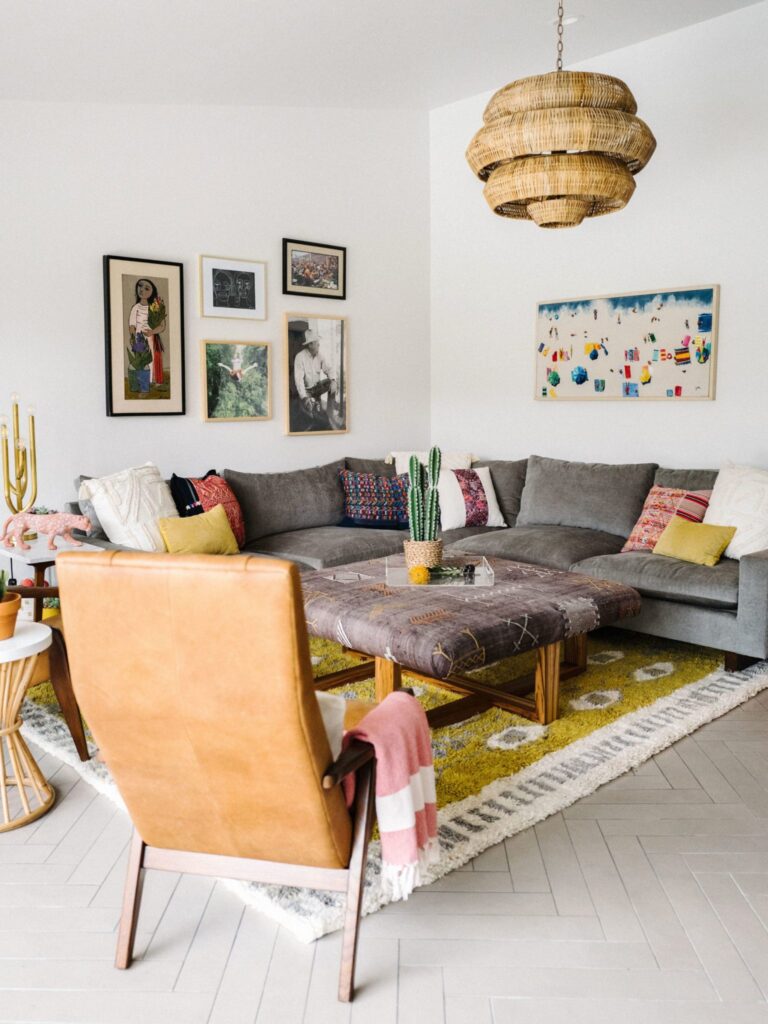Unlocking the Secrets to Stress-Free Living
Living alone can be a liberating experience, but it also comes with its own unique challenges. One of the key elements to enhancing your solo living experience is ensuring that your home remains organized. This not only contributes to a more aesthetically pleasing environment but also significantly alleviates stress. Here are a few simple organization tips that can help you manage your space effectively:
- Declutter Regularly: Make it a priority to schedule time each month to rid your space of items you no longer need. Consider the “one in, one out” rule; for every new item you bring into your home, try to remove an old one. This approach not only helps maintain a clutter-free space but also encourages mindful consumption.
- Designate Zones: Assign specific areas for different activities. Create a cozy reading nook that invites relaxation, carve out a separate workspace for productivity, and clearly define your cooking area. This separation allows you to mentally switch between activities, boosting your focus and enjoyment.
- Storage Solutions: Take advantage of vertical space and invest in multifunctional furniture. For instance, a bed with built-in drawers can be a game-changer, providing extra storage without taking up additional floor space. Using shelves to store and display items can also enhance the visual appeal of your home while keeping essentials organized.
With the right strategies, maintaining an organized home can become second nature. Streamlining your space not only saves time when searching for items but also fosters a calming atmosphere that helps you unwind after a long day. For example, research indicates that organized spaces can lead to decreased anxiety and improved mood, making it even more crucial to cultivate a tidy living area.
Why Organization Matters
A well-organized home can lead to increased productivity and reduced stress. According to studies, individuals who maintain organized environments often report higher levels of concentration and creativity. An organized space creates an environment where everything has its place, allowing you to focus on what truly matters in your life, be it pursuing a hobby or simply enjoying a quiet evening at home.
Beyond aesthetics and calmness, good organization can save you money and time. Imagine not having to buy duplicate items because you couldn’t find the original! Consider integrating a personalized organization system tailored to your unique lifestyle. For instance, if you’re passionate about cooking, dedicating a shelf in your kitchen for your favorite cookbooks and spices can encourage culinary creativity.
By actively applying these organization techniques, you can transform your solo living experience into a simpler, more enjoyable one. Explore these routines further and discover how they can align with your lifestyle, ultimately allowing you to unlock a world of stress-free living.

CHECK OUT: Click here to explore more
Creating Your Organized Sanctuary
As you navigate the world of solo living, the way you manage your home can significantly influence your daily life. Engaging in practical organization techniques allows you to build a personalized sanctuary that caters to your needs and reflects your style. Here are some innovative ideas to revitalize your home organization game:
- Embrace the Digital Age: Digitizing documents and photos can save you from cluttering your physical space with unnecessary papers. Consider using applications and digital tools to keep important records organized and easily accessible. Cloud storage services like Google Drive or Dropbox can help you safely store important information while keeping your home tidy.
- Label Everything: A simple yet effective way to maintain organization is to label boxes, bins, and drawers. This not only expedites your search for certain items but also encourages you to put things back in their designated places. Invest in a label maker or simply use adhesive tags and a marker for a cost-effective solution.
- Rotate Seasonal Items: If space allows, create a system to store seasonal items in an organized manner. For instance, use under-bed storage for winter clothing during summer months, or designate a closet for seasonal decorations. This method keeps your space clutter-free and allows you to enjoy only the items relevant to the current season.
Implementing these simple techniques can lead to a remarkable transformation in your living environment, making it not only organized but also inviting. According to a survey by the National Association of Professional Organizers, approximately 82% of people feel less stressed when their living space is organized. This statistic underscores the profound impact that a well-maintained home can have on your mental well-being.
Small Steps Lead to Big Changes
When it comes to organization, remember that small steps can lead to significant changes. Start by picking one area of your home each week to tackle, whether it’s your closet, kitchen, or workspace. Break the task into manageable chunks, as overwhelming yourself can lead to burnout. For example, you could devote 15-30 minutes each day to organizing a specific drawer or shelf. By consistently focusing on one area, you will gradually see the fruits of your labor without feeling the pressure of an enormous task.
In addition, consider involving some fun in the process. Turn on your favorite playlist or an engaging podcast while you organize. Not only does this make the task feel less tedious, but it also motivates you to maintain a rhythm while you work towards achieving an organized living space.
Cultivating these organization strategies contributes not just to a visually satisfying environment but also to a more harmonious lifestyle. Every item being in its rightful place can pave the way for a smoother day-to-day routine, reflecting the beauty of solo living with ease and grace.
| Category | Details |
|---|---|
| Time Management | Efficient scheduling makes it easier to balance work, chores, and leisure, ensuring a more relaxed living experience. |
| Space Utilization | Adopting multi-functional furniture and thoughtful organization can free up space, allowing for a more inviting and functional home environment. |
To further enhance your solo living experience, consider implementing some practical strategies that not only streamline your daily tasks but also cultivate a warm and inviting atmosphere. Prioritize decluttering your living space regularly; less clutter leads to reduced stress and increased productivity. Additionally, maintaining a designated spot for your belongings is crucial for easy access, saving you precious time throughout your day. Explore different storage solutions, such as vertical shelving or under-bed storage, to maximize every inch of your home. Utilizing clear bins can also aid in easy visibility, making it simple to find what you need when you need it. Remember, the key to successful home management lies in creating a system that works for you and adapting it as your lifestyle evolves.
SEE ALSO: Click here to read another article
Maximizing Space and Functionality
When living solo, effectively utilizing your space is paramount for creating an organized home environment. From clever storage solutions to multi-functional furniture, implementing space-saving strategies can make a significant difference in how you manage your home. Here are some key tips to achieve a more functional living space:
- Multi-Use Furniture: Invest in furniture that serves multiple purposes. For instance, a coffee table with built-in storage or a sofa bed can enhance your living space without compromising functionality. A dining table that doubles as a workspace can also provide versatility, especially for those working remotely. This approach not only saves space but can also streamline your home management.
- Vertical Storage Solutions: Don’t overlook the power of walls when it comes to organizing your home. Utilizing wall-mounted shelves, pegboards, and hooks can free up valuable floor space. Consider employing tall bookshelves for added storage that draws the eye upward, creating the illusion of a bigger area. These vertical solutions allow you to keep everyday items accessible while leaving your surfaces clear.
- Declutter Regularly: One of the most effective ways to manage your home effortlessly is by regularly decluttering. Allocate time monthly to assess your belongings and decide what can be recycled or donated. By continuously reviewing your items, you allow yourself to maintain a fresh and organized environment. The 80/20 rule, which states that we often only use 20% of our possessions 80% of the time, is a powerful reminder to simplify and prioritize what truly adds value to your life.
Statistics reveal that Americans throw away approximately 4.4 pounds of waste per person per day, underscoring the importance of conscious consumption and organization. Simplifying your belongings not only minimizes waste but can foster a sense of clarity in your home.
Create Functional Zones
Establishing functional zones within your living space can greatly enhance productivity and organization. Start by dividing your home into specific areas for different activities, such as working, relaxing, and sleeping. This clear delineation helps in maintaining focus and order.
For your workspace, consider incorporating organizational tools like a filing system for important documents, a bulletin board for reminders, and dedicated drawers or bins for office supplies. This dedicated area ensures that work materials do not invade your relaxation zones, thus allowing you to unwind without distractions.
In the kitchen, utilize drawer dividers to categorize utensils, gadgets, and pantry items systematically. The more intuitive your layout is, the less time you will spend searching for items, which promotes efficiency in meal preparation and entertaining.
Additionally, make it a habit to tidy up your zones daily. This minimizes clutter build-up and keeps your home in a state that is both functional and serene. Engaging in these simple rituals fosters a lifestyle where organization becomes a natural part of your daily routine rather than a daunting task.
By maximizing space and clearly defining areas within your home, you not only enhance your overall living experience but also make home management simpler and more enjoyable. Each of these strategies aids in creating a sanctuary where you can thrive as you embrace the joys of solo living.
SEE ALSO: Click here to read another article
Conclusion
In the realm of solo living, mastering easy home management is vital to creating a sanctuary that reflects order, comfort, and functionality. By implementing simple organization tips such as utilizing multi-use furniture, maximizing vertical space, and establishing clear functional zones, you pave the way for a more streamlined lifestyle. Each of these strategies not only enhances the aesthetic appeal of your home but also contributes to a more efficient way of living.
Moreover, cultivating a habit of regular decluttering can significantly reduce daily stress, helping you to focus on what truly matters. As you dispose of unnecessary items and simplify your space, the psychological benefits of a well-organized home become evident, promoting tranquility and clarity amidst the hustle of everyday life. Remember, an effective home management strategy is about finding balance—incorporating organization into your daily rituals can transform mundane tasks into enjoyable routines.
As you continue your journey of solo living, consider viewing your home not just as a place to reside, but as a canvas of self-expression. Each organization method you adopt contributes to a personalized atmosphere that inspires you to thrive. Embrace these ideas and explore further options to elevate your living experience, ensuring that your home remains a haven that supports your goals and aspirations.

Linda Carter is a writer and organization expert specializing in minimalism and personal organization. With extensive experience helping individuals create clutter-free, functional spaces and adopt mindful habits, Linda shares her knowledge on our platform. Her goal is to empower readers with practical advice and strategies to simplify their lives, stay organized, and achieve a sense of calm and balance in their daily routines.










